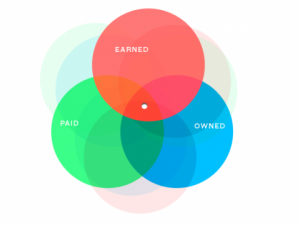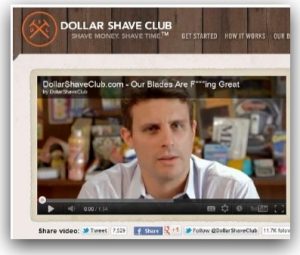 As smart marketers increasingly understand the value of good content, we’ll see continued growth and innovation in the discipline. The CMA recently reported that 64% of UK clients expect to spend more on content in 2018, and we certainly expect a more structured and long-term approach with more clients producing a documented content strategy – up from the current 50%.
As smart marketers increasingly understand the value of good content, we’ll see continued growth and innovation in the discipline. The CMA recently reported that 64% of UK clients expect to spend more on content in 2018, and we certainly expect a more structured and long-term approach with more clients producing a documented content strategy – up from the current 50%.
As a result, we will see more and more content produced. In the two minutes it takes to read this article, 800 hours of video will be uploaded to YouTube, 12 million videos will be viewed on Facebook and 5 million video searches made on Google. That’s a lot of content, so the key to cutting through is to make good quality brand-led content that consumers can easily find and, more importantly, chose to engage with.
Here’s ten tips to get ahead in content in 2018:
 1) Understand where content sits in Owned, Earned, Paid media system: Mapping your consumer purchase journey and creating content strategies for key audience segments on that journey will be crucial to brand success. Less will be more as brands pull back from the ‘knee-jerk’ to fill the pipes full of content (no matter its quality or relevance).
1) Understand where content sits in Owned, Earned, Paid media system: Mapping your consumer purchase journey and creating content strategies for key audience segments on that journey will be crucial to brand success. Less will be more as brands pull back from the ‘knee-jerk’ to fill the pipes full of content (no matter its quality or relevance).
2) Create more personalised content: Take a leaf from the DCO (dynamic creative optimisation) playbook, and ensure content is better personalised to individuals. Rapid, frictionless content development at scale will be key.
3) Don’t ignore the Influencers: Now we can audit which Influencers are truly driving engagement for brands, campaigns of significant reach and positive brand outcomes will be the norm. This is still a complex landscape given the plethora of choice from mirco-influencer through to celebrity, but it’s no longer a niche channel so seek help to navigate this complexity via proven influencer products.
 4) Ensure video content is platform ready: Video remains the key battleground for branded content and it will account for 82% of all IP traffic by 2021 (Cisco). Of that live video is expected to grow 15-fold. This will put pressure on the supply of good quality brand safe video inventory, presenting an opportunity to partner with creators and publishers to increase this.
4) Ensure video content is platform ready: Video remains the key battleground for branded content and it will account for 82% of all IP traffic by 2021 (Cisco). Of that live video is expected to grow 15-fold. This will put pressure on the supply of good quality brand safe video inventory, presenting an opportunity to partner with creators and publishers to increase this.
Additionally, the content that advertisers produce needs to be platform ready, rather than an adaptation of TVCs. Even among advertisers embracing YouTube, there is considerable “creative dissonance” between the ads and the content. For every Dollar Shave Club ad, there are hundreds less attuned to the platform. Advertisers and agencies need to produce communications that are engaging, relevant, a disincentive to ad blockers, and employ the lower-cost production techniques so effectively adopted by the content creation community.
 5) Pay attention to Voice: With projections showing that 30-50% of search will be screen-less, ie. voice by 2020, it’s imperative that brands start building for Alexa, Google Home and Siri. Whatever direction you go in, there is a clear benefit to getting on the platform early, testing, learning and iterating ahead of competitors. And while we are talking voice, don’t forget the humble Podcast. Those who loved Serial, Dirty John, Blue Planet2 have driven listening by 15% (Edison) so innovations such as interactive ‘chose your own’ dramas offer interesting alternative opportunities.
5) Pay attention to Voice: With projections showing that 30-50% of search will be screen-less, ie. voice by 2020, it’s imperative that brands start building for Alexa, Google Home and Siri. Whatever direction you go in, there is a clear benefit to getting on the platform early, testing, learning and iterating ahead of competitors. And while we are talking voice, don’t forget the humble Podcast. Those who loved Serial, Dirty John, Blue Planet2 have driven listening by 15% (Edison) so innovations such as interactive ‘chose your own’ dramas offer interesting alternative opportunities.
6) Seek out the new content players: Despite rocky financials reported by HuffPost, Mashable and BuzzFeed in 2017, there are new kids on the MCN block worthy of serious consideration, especially if GenZ is in your sights. Look at AwesomenessTV, Astronauts Wanted and Whistle Sports. All are growing significant, highly engaged audiences in social. For best results, work with their creators in an ‘authentic’ way.
7) Prioritise quality and honesty: Consumers are frustrated with fake news and the time it takes to discern what is fake. They’re tired of content presented as educational that is really a thinly veiled commercial, and exhausted by deceptive link-bait. In 2018, companies that create honest, authentic and transparent content that meets people’s needs will touch a chord with a large percentage of consumers who are burned out.
 8) Technology will continue to power innovation: While there will always be over-hype and failure with technology (such as Snap Spectacles), it will still power much of what’s new and possible in content. We’ll see a reprise in interest in AR, following big bets on AR from Facebook, Apple and Snap. We also expect spend to increase on AI as chatbots become more sophisticated and useful to consumers.
8) Technology will continue to power innovation: While there will always be over-hype and failure with technology (such as Snap Spectacles), it will still power much of what’s new and possible in content. We’ll see a reprise in interest in AR, following big bets on AR from Facebook, Apple and Snap. We also expect spend to increase on AI as chatbots become more sophisticated and useful to consumers.
9) Look beyond standard media metrics: Likes and comments are useful to understand but real engagement comes when someone is truly moved to act or think differently. In a natural evolution of measuring sentiment, we’ll see a move towards embracing emotional analytics to better understand the impact of content. These might include tools like facial recognition, reaction-time testing or neuro tools.
 10) Connect content to commerce for real success: In the world of the infinite shelf how does the consumer find you. Now is the time to break down structural silos and bring content and e-commerce together and enable retailers and manufacturers to create more bespoke content and innovative experiences, and allow consumers to connect with the brand on a more personal and meaningful level.
10) Connect content to commerce for real success: In the world of the infinite shelf how does the consumer find you. Now is the time to break down structural silos and bring content and e-commerce together and enable retailers and manufacturers to create more bespoke content and innovative experiences, and allow consumers to connect with the brand on a more personal and meaningful level.
The winners in content will be the marketers who truly understand their customers’ complete purchase journeys and effectively join up their media, content and technology eco-systems to deliver authentic messages at the right time and in the right place.
 Article by Richard Stokes, Global Head of Content, Wavemaker
Article by Richard Stokes, Global Head of Content, Wavemaker
About Richard:
Richard is responsible for the global content offering at Wavemaker, bringing together experts from around the world to offer bespoke content solutions for clients.
He has a diverse background across media and advertising, having worked in both full service and media owner roles, setting up digital and content divisions in UK and Poland before joining Maxus’ board as Chief Development Officer in 2012.
Source: Wavemaker

You must be logged in to post a comment Login